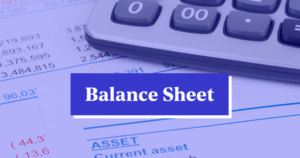1. Why should everyone understand gross profit margin?
Whether a company is making money can be seen immediately from its gross profit margin. This is not just for accounting professionals—it is a basic skill every investor, entrepreneur, or even solo e-commerce seller should master. Simply put, the gross profit margin tells you how much of each dollar of sales you actually “get to keep,” after paying for raw materials and production costs.
1-1 What is gross profit margin?
In one simple sentence: Gross profit margin = (Revenue – Cost of Goods Sold) ÷ Revenue × 100%.
For example, if you sell a pen for 100 and the total cost of purchase, packaging, and shipping is 60, then your gross profit margin is:
(100 – 60) ÷ 100 × 100% = 40%.
This means you really have 40 left “to allocate,” while the rest still needs to cover rent, salaries, utilities, and other expenses before it becomes net profit.

1-2 How is gross profit margin different from net profit?
Many people confuse the two. Gross profit margin measures revenue after deducting only “direct costs,” while net profit is the final calculation after subtracting everything including taxes—the actual money that stays in the company’s pocket. The former shows whether the product itself has value; the latter shows whether the overall business is viable.
2. The hidden meaning behind high or low gross profit margins
A higher gross profit margin is not always better, nor does a lower one always mean trouble. Different industries and strategies carry different implications.
2-1 Product pricing must be just right
Price too low and margins are squeezed; price too high and customers disappear. The key is to find the sweet spot that balances market acceptance and profitability.
2-2 Should sales costs be cut at all costs?
Not reckless budget cuts, but “effective control”: buy raw materials in bulk, choose cost-effective logistics, maximize production efficiency. Done properly, gross profit margin naturally improves.

2-3 Product mix as a strategy
Some products yield high margins, others just break even. A smart approach is to bundle them—let high-margin products lift the overall ratio while maintaining cash flow stability.
3. Understanding gross profit margin makes financial reports easier
You don’t need to be a finance expert. Just by looking at gross profit margin trends, you can infer a lot about business dynamics.
3-1 What does an increasing gross profit margin mean?
It could be cheaper raw materials, more efficient production, or successful price increases. These are usually positive signals, showing healthier operations.
3-2 Be cautious when gross profit margin declines
This might mean intense price competition or poor cost control. At this point, you need to look deeper into other financial figures for confirmation.

4. How can small investors use gross profit margin for stock picking?
Don’t just chase hot sectors or stock price rallies. Identifying gross profit margin changes in financial reports can help you spot stable, high-potential opportunities.
4-1 Compare with peers to see who wins
Within the same industry, if a company consistently posts higher margins than its peers, it may have advantages in brand, technology, or cost control—indicating stronger long-term competitiveness.
4-2 Long-term trends matter more than a single quarter
A sudden change in one quarter might be a one-off event. But if margins remain stable or improve over several consecutive quarters, that’s worth paying attention to.

4-3 Practice with a demo account to understand company fundamentals
Want to better experience how corporate figures translate into stock price reactions? Use a demo account to simulate trades and practice evaluating companies with gross profit margins—improving without spending a cent.
5. Real investing: gross profit margin builds confidence
When you’re ready to put real money on the line, trading accounts let you fully apply gross profit margin analysis to stock and sector selection with greater confidence and better risk control.
Ultima Markets provides more than just a trading platform—it offers a toolkit that turns financial analysis into action:
| Tool | What it helps you do |
| Financial Data Hub | Track gross profit margins and financial report changes of major companies in real time |
| Online Finance Courses | Learn how gross profit margins apply to different industries and where the pitfalls lie |
| Real-Time Trade Simulation | Turn numbers into strategies and build trading instincts through hands-on practice |
7. FAQ
Q: What gross profit margin level is considered healthy?
A: Standards differ by industry. For example, software firms often reach 80–90%, while in retail, anything above 30% is good. What matters most is stability and ongoing improvement, not the absolute figure.
Q: What does a negative gross profit margin mean?
A: Simply put, the more the company sells, the more it loses. This usually happens when costs exceed selling prices—caused by price wars, raw material spikes, or poor strategy. Pay special attention to such situations.
Q: Can gross profit margin be manipulated?
A: On paper it’s relatively transparent, but companies can adjust cost categories or use one-off income to beautify reports. Always check alongside other data such as cash flow and operating profit margin to avoid being misled.
Q: Is gross profit margin only relevant for large companies?
A: Wrong! As long as you sell something—whether through e-commerce, a market stall, or a breakfast shop—gross profit margin is your first step to understanding profit space. Without it, you might celebrate high revenue without realizing you’re losing money.
6. Conclusion: Gross profit margin is not a cold number but a compass of corporate value
Whether you’re starting a business, running a side hustle, or picking long-term stocks, gross profit margin is an indispensable financial indicator. It reveals the logic of profitability and helps you uncover hidden risks and opportunities.Starting today, practice breaking down the relationship between cost, price, and profit. Gross profit margin will become your essential guide to business intuition.




